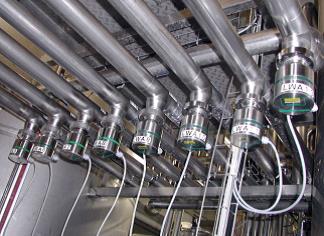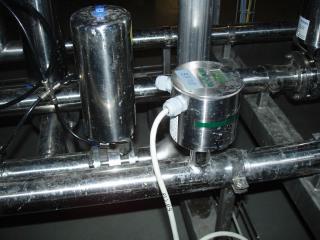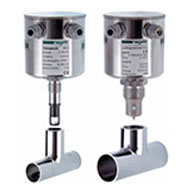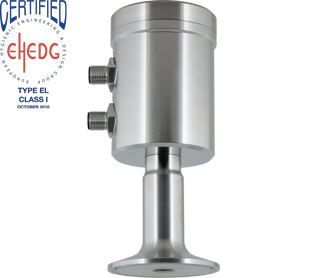The options in comparison
Manual switch-over and time control
The two options first mentioned are sophisticated and involve considerable losses. Where the manual change-over and the time control are concerned, the investment costs are low. However, they are immensely expensive in the subsequent costs for a plant operation duration of 10 years, for example. This is evident from the following aspect: if only 10 l product are lost per phase change with, for example, 4 phase changes per week, this results in a loss amounting to a total of 10400l in 5 years. Multiply this with the margin of the product. For the purpose of clarity: 10 l product fit into an approx. 3m pipe with a nominal width of DN65. With a flow velocity of 1m/s, this means that 10 l disappear in just about 3 seconds!
The manual switch-over which manual switch-over cannot be adopted for use in the CIP area, requires increased manpower and can undergo considerable fluctuations depending on the co-worker and the daily form. => quality differences, product => quality differences, product losses and personnel assignment. losses and personnel assignment.
With the change-over by means of time control time control, a certain safety time interval time control must be given due consideration in order to prevent too much water from getting into the product tank. => in part, considerable product losses
Phase separation by means of volume acquisition With regard to the product loss, better results are achieved with the change-over by means of volume acquisition volume acquisition than with the time-controlled method. Depending on the plant, however, the volume acquisition is very sophisticated. Particularly where larger installations are concerned, where several tanks are connected up to one production plant, the emptying of a plant with water and the change-over as soon as the plant is empty is complicated to calculate because the piping routes and the tank volumes are different. Moreover, possible water inclusions which are still in the plant are not recognised.
=> in part, product losses; residual risk => in part, product losses; residual risk – water in the product; very sophisticated during start-up and planning
Phase separation by means of conductivity and turbidity The phase separation with the phase separation use of sensors is a sensors cost-optimal solution. The sensors, which are mounted at a short distance upstream of the switch-over valve, switch over exactly and precisely at the pre-set product concentration. Water inclusions are recognised immediately. Planning and start-up costs are low because the switch-over point is independent of volume and time. This also ensures maximum safety and reliability opposite unwanted water in the product.
=> minimal product losses; no quality differences; maximum safety and reliability; no personnel requirement => minimal product losses; no quality differences; maximum safety and reliability; no personnel requirement




.png)

Copyright © 2022 Anderson-Negele